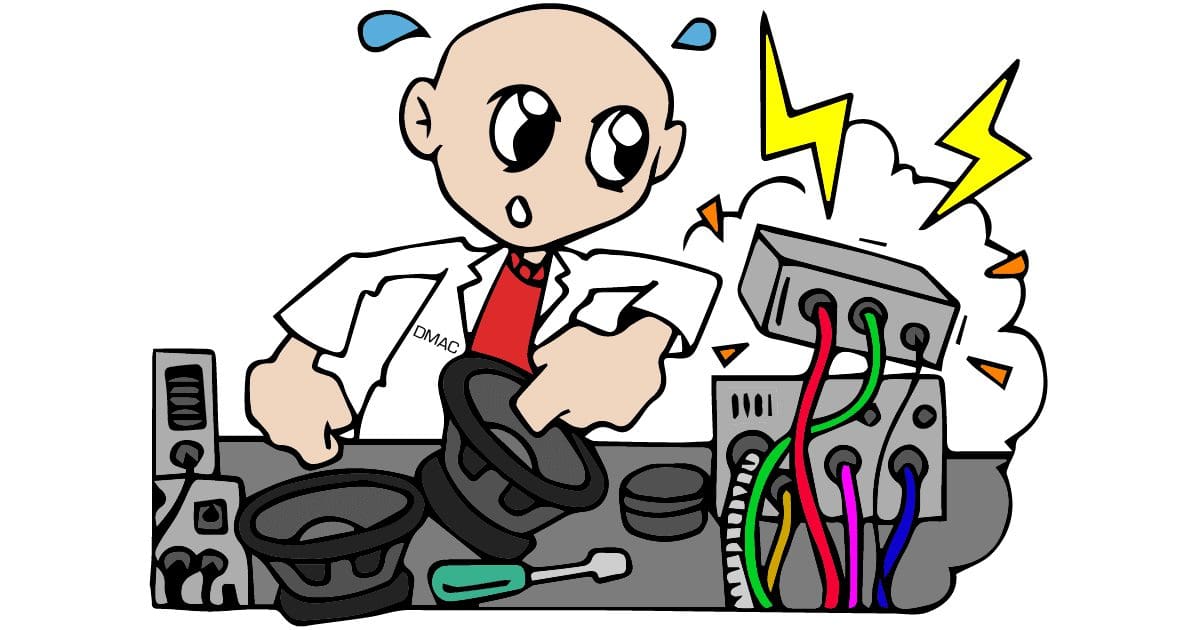Car audio questions on social media blow my mind. Do these speakers sound good? Does this amp make enough power? What radio is the best? Where should I install my tweeters? I see these questions asked in Facebook groups and on Reddit dozens of times a day. In 99% of the cases, my instinct is to suggest that the person asking the question go to a car stereo shop to get an expert answer. So, I sat back to consider why people don’t start their car audio system upgrade research with a professional mobile enhancement retailer.
Consideration 1: Location
OK, there is a chance that someone asking one of these questions lives in a rural area with no shops nearby. I can fully understand the challenges of shopping for car audio upgrades if you live in northern Alaska or some parts of Montana, South Dakota or Oregon. It might take a few hours to drive to a shop to talk about upgrading the sound system in your car or truck.
This lack of proximity doesn’t mean that you shouldn’t seek out expert advice. I can guarantee that there is a city with a car stereo shop somewhere in your state, so reaching out to them via email or a phone call is a good starting point. You can tell them you live three or four hours away and want help choosing products. Many of these shops have resources to support customers who will be driving long distances to have work done on their vehicles. If you’ve done all the homework beforehand, you can make the trip and get everything you want installed professionally.
If you’re looking for a reputable shop, try out the BestCarAudio.com dealer locator.
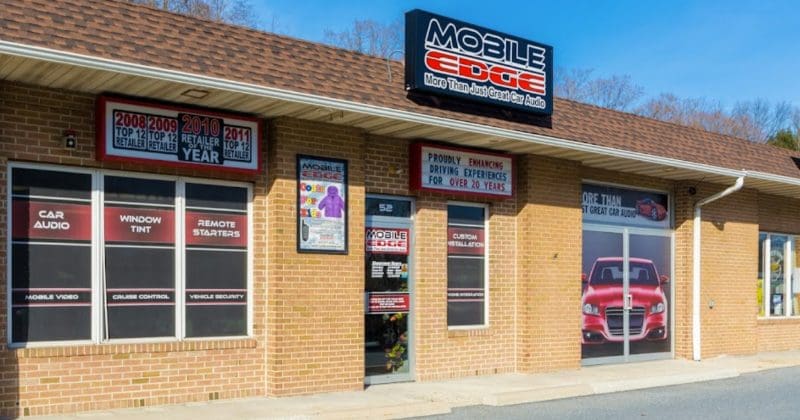
Consideration 2: Seek Expert Knowledge
The biggest problem with asking for feedback on a specific selection of products is that you aren’t dealing with experts. Consumers may have experienced one or two of the speakers or radios you’re considering, but do they know enough to make an educated suggestion about your list of products? Do they have the training to understand what makes one product different from or better than another? Though it seems like a dying art, explaining the differences among speakers, amplifiers, subwoofers or source units is challenging and complicated if the answer is to be all-encompassing.
It typically takes me at least a full day of testing and listening to get an accurate representation of the products I review. Then, there’s at least another day to process the data from the measurements and write the review. These reviews are intended to highlight the features of a product and explain its performance. Therefore, we take them very seriously. You can check them out here.
Suppose you want to know which speakers are the best for your vehicle. In that case, the product specialist you’re working with should know what size speakers fit your application, and they should have an extensive understanding of the differences between the solutions they offer in terms of performance and value. One way to gauge this is to ask the product specialist why they suggest a specific solution. If they can’t answer that, they might not be anything more than a sales clerk. That isn’t the level of expertise you need to get the best solution.
When you walk into a car stereo shop, look for signs that the employees have attended suitable training. One quick way to get a sense of their reliability is if they’re displaying evidence of MECP Certification. The Mobile Electronics Certified Professional program provides installers and product specialists with specific training to improve their quality of work and customer service skills.
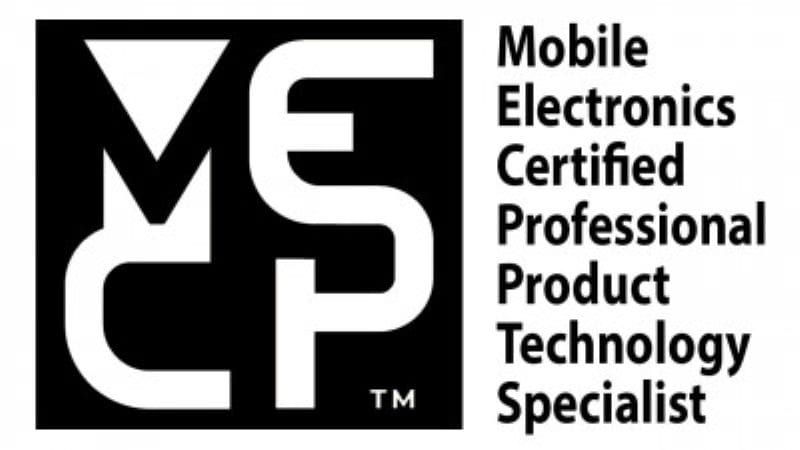
Consideration 3: Unique Product Applications
Often a product is designed for a specific application or segment of the market. Suggesting that a Rockford Fosgate Power Series 16-inch subwoofer is a good solution for a Miata or under the seat of a pickup truck isn’t very helpful. Some speakers are designed and optimized for use with low-power amplifiers. Others need more than 50 watts to impress a listener. Some only work at higher frequencies, meaning that you also need a subwoofer or midbass driver.
Knowing which solution is best requires that someone is aware of the audio products that are already in the vehicle and can quantify the client’s short- and long-term plans. You aren’t going to get that service from a social media post about the best speakers for a pickup truck.
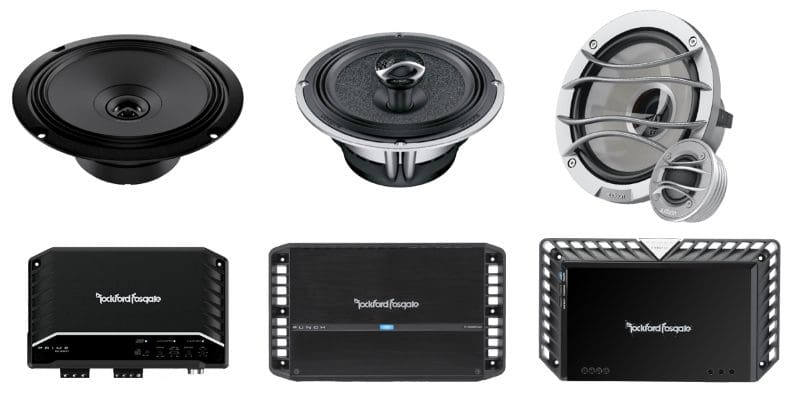
Consideration 4: Auditioning Products
Getting back to the basics, if you want to know which speakers are the best for your application, go to a store and listen to them. You can’t compare them by looking at the limited specifications most companies publish. Even if they did provide detailed frequency response information, you’d want to listen to them to pick out any unwanted distortion or emphasis. We’ve seen many speakers that look great on paper but sound terrible in the real world.
The same goes for source units. You can’t get a feel of how easy a radio is to use by looking at pictures of it on the internet. Does it boot up quickly? Does your phone pair with it reliably? Will it play your digital audio collection? Is the volume control easy to use without looking the device? How quickly does it respond to input? Buying a radio is like buying a suit or sunglasses – you absolutely have to try them on.
Though it’s harder to discern differences among amplifiers, listening to them is also essential. Some sound sloppy, muddy or dull, while others are tight, controlled and clear. Without extensive testing, it’s nearly impossible to get a sense of the differences based purely on specifications, so listening to them and comparing options is your best bet.
Just as with speakers, it’s essential to audition subwoofers. Some are boomy, while others are tight and well-controlled. Depending on the enclosure, they might offer a great deal of low-frequency output or have a thinner sound. Of course, listening to subwoofers in a vehicle is preferable, but you can still compare models at a store to get an idea of their performance.
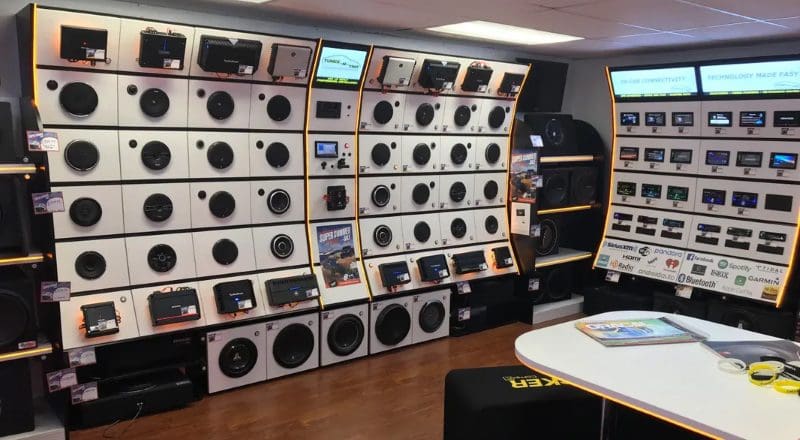
Consideration 5: Modern Vehicle Audio System Integration
Even if you get the best possible parts for your vehicle, integrating them into your car or truck isn’t easy. If you have a ’90s Civic, replacing the radio or door speakers isn’t a massive challenge if you’re handy with tools. However, if you have a vehicle that was built in the last few years, knowing whether you can successfully upgrade the factory audio system is the challenge. Does the radio module in the dash communicate with an amplifier and processor in the trunk using MOST, A2B, Ethernet or with a fixed-level signal and CAN communication? Does the radio include equalization to optimize the factory speakers? Are there all-pass filters in the system? Does the vehicle have an active noise cancellation system? Are “engine sounds” played through the factory stereo? Where do the door chime sounds come from?
Years ago, taking cars and trucks apart, installing the new equipment, and putting them back together was the biggest challenge. Now, installers need tools and training to make measurements of the factory system before they can even begin an installation. Failing to do this testing could easily result in something like a speaker upgrade making the audio system sound worse.
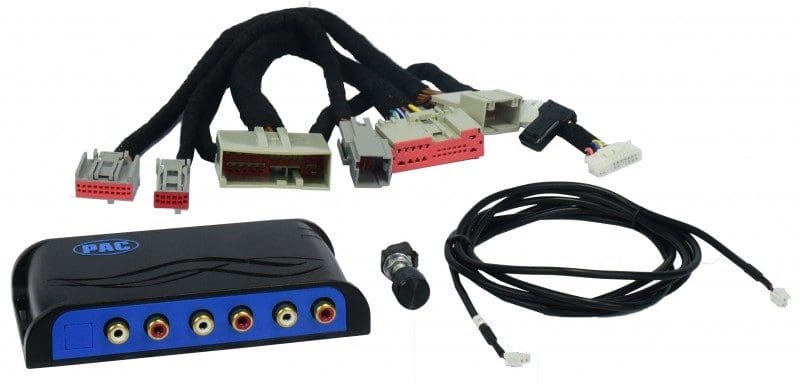
Problem 5: Car Audio System Configuration and Calibration
If you had a car stereo shop add a subwoofer system to your ’90s Ford pickup, all that would be required in terms of setting up the system would be to adjust the crossover to blend the sub with the door speakers and set the level. The configuration process might take 15 minutes and could be done reliably without any measurement equipment, provided the technician had adequate experience.
If you plan on upgrading a modern car audio system to something that improves the factory sound, the system will need a digital signal processor and multiple amplifier channels. For many companies, their DSP-equipped eight-channel amplifiers are some of their most popular products. However, having the tools and training to set up a system properly in terms of proper crossover frequencies, signal delay settings, equalization and level adjustments are essential to making a car audio system sound great. For example, a small speaker or a tweeter could be damaged very quickly if something is misconfigured. Likewise, crossover settings can affect where the music comes from in the vehicle. You don’t want the voices to be coming from the floor.
Making the system sound great is an entirely different challenge. Getting the equalization settings for each speaker correct is a whole other level of complication. A calibrated audio analyzer is required to make measurements in the vehicle. The technician needs to know what information is relevant to making the system sound realistic and what should be ignored.
Even before the technician starts calibrating the digital signal processor, they’ll need to know the client’s listening preferences. For example, do they like a lot of bass or aggressive midbass? Do they want the soundstage on the dash or in the middle of the vehicle? Do they want the center image in front of the listening position or the center of the vehicle?
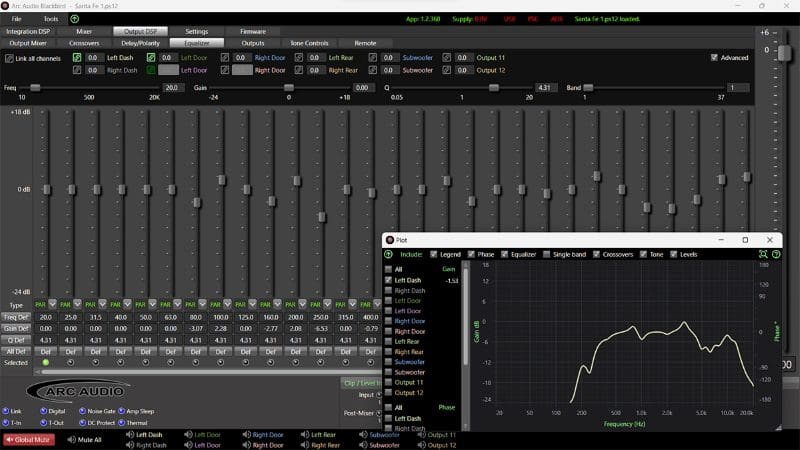
Consideration 6: Product Warranties
Though it might take some digging into the fine print on the warranty card, many car audio products are covered by an extended warranty against manufacturing defects when they are installed and configured by an authorized retailer. Someone selling these products online would never tell you about this as it’s detrimental to their business model.
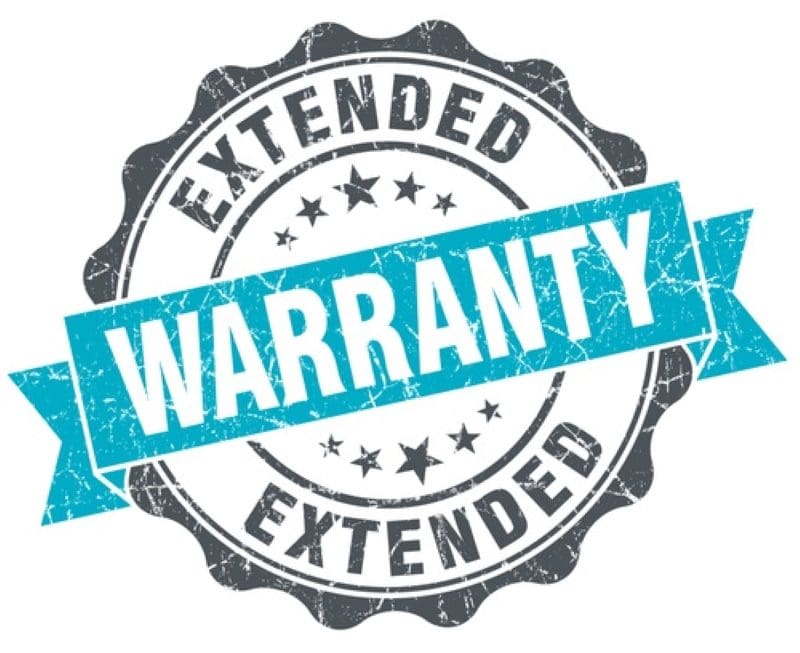
Consideration 7: After-Sales Support
The mark of a great business is not exclusively in how well they qualify your needs and deliver a great product, but also in how they stand behind their solutions after the sale. For example, let’s say you purchase a new multimedia receiver and have it installed by a local specialty mobile enhancement retailer. A year later, you decide to switch from an Android smartphone to an iPhone. You can drop by the shop if you need help connecting the new phone to your radio. They should be able to assist you right away.
In the unfortunate event you have a problem with a product and it requires servicing or replacement, dealing with a brick-and-mortar shop can dramatically reduce headaches. If you purchased the product online, it will need to be removed from the vehicle, shipped back for repair, then reinstalled and reconfigured once it returns. If you deal with a local shop, most will handle all this for you. Some even have an over-the-counter exchange policy where they will put in an equivalent or new product, so you only have to make one trip. Knowing how the product warranty works is vital in choosing a reputable shop to upgrade your vehicle.
Consideration 8: Not All Shops are Professionals
Though it pains us to say it, not all car stereo shops offer excellent service. Picking one is akin to looking for a restaurant. If you want a fantastic four-course steak dinner, you aren’t going to Golden Corral. If you’re craving authentic Chicago-style pizza, you won’t go to Little Caesars. If you want a quiet candlelit dinner with your better half, Chuck E. Cheese isn’t the place. Selecting a shop to upgrade your vehicle takes work.
The first step in picking a great shop is research. This is something you can do on social media. Ask who has dealt with the shop you have in mind. Ask them what kind of work they had done. Ask to see photos of the work. If you’re planning an extensive system with a digital signal processor, you’ll want to listen to several examples of the shop’s work before you commit to anything. Do the systems sound the way you want? Is there any background noise? Does it play loudly enough?
Ask for a tour of the shop. Do they have the facilities required to do the work you want? For example, if there will be any custom work like speaker pods or a subwoofer enclosure, they should have a dedicated fabrication area. Are the vehicles in the bay protected with seat and fender covers? Are they on a battery charger? Is there a vehicle check-in and check-out system? You can get a feel for the professionalism of a company by watching how its team members work. If you find yourself at a shop that doesn’t inspire confidence, go somewhere else. It’s that simple.
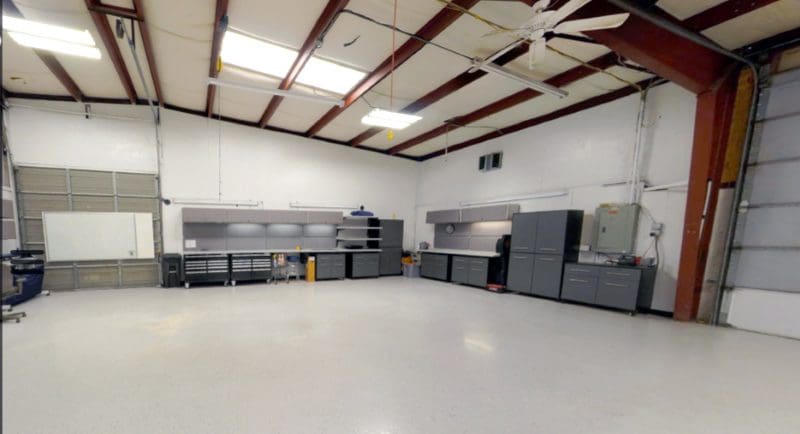
Choose a Professional to Upgrade Your Car Audio System
In most cases, having a real professional upgrade the entertainment system in your car, truck or SUV will yield significantly better results than attempting to do it yourself. You can access their product knowledge, installation expertise and system configuration experience. Best of all, the work is done quickly and efficiently without any headaches. If you find yourself asking questions about car audio upgrades online, consider contacting a professional and working with them to make your car stereo system sound amazing!
